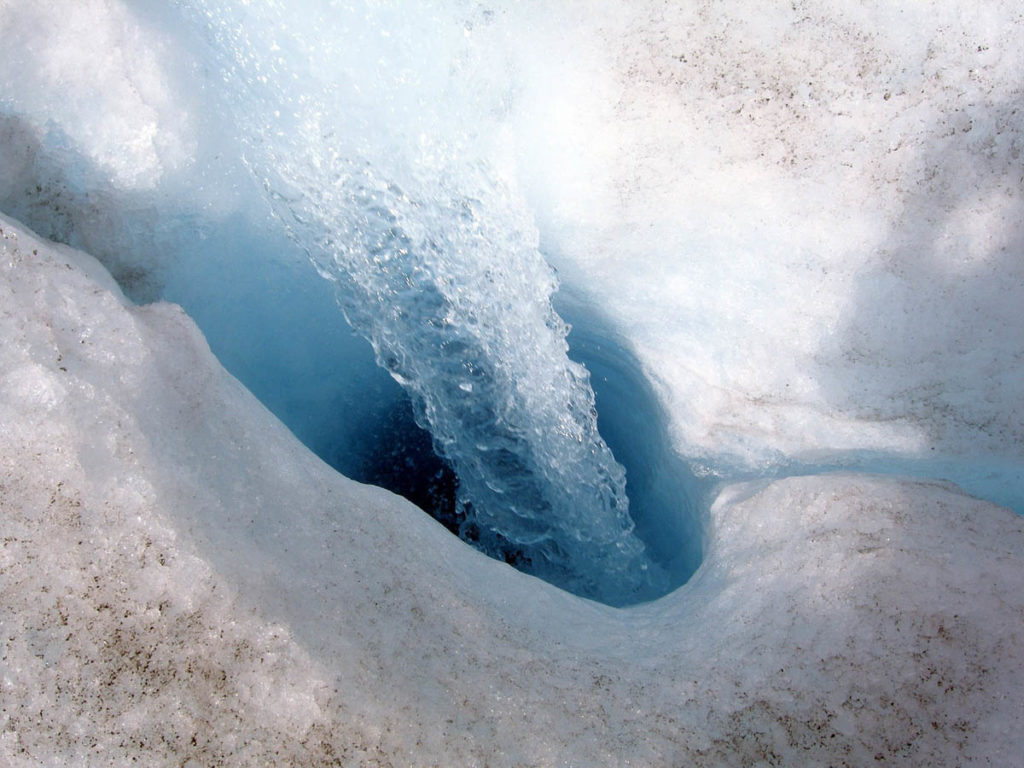About a Moulin
A moulin (or glacier mill) is a well-like, roughly circular, vertical (or nearly vertical) shaft within a glacier or ice sheet through which water enters from the surface. The word comes from the French word for mill.
They can be up to 10 metres wide and are commonly found on ice sheets and glacier flat areas with transverse crevasses. Moulins can reach hundreds of metres below the glacier’s surface, or they can only reach the depth of common crevasse formation (about 10–40 m) where the stream flows englacially. They are the most common cause of glacier cave formation.

Moulins are parts of glaciers’ internal structures that transport meltwater from the surface to wherever it may go. Water from a moulin frequently exits the glacier at base level, occasionally into the sea, and the lower end of a moulin may occasionally be exposed in the face of a glacier or at the edge of a stagnant block of ice.
Water from moulins may help lubricate the glacier’s base, influencing glacial motion. Given the right relationship between an ice sheet and the terrain, the head of water in a moulin can provide the power and medium for the formation of a tunnel valley. The role of this water in lubricating the base of ice sheets and glaciers is complicated, and it is implicated in accelerating glacier speed and thus the rate of glacial calving.
A nine-year-old boy vanished into a moulin while snowmobiling with his father in 2013. He and his father were about five miles northwest of Alaska’s Hoodoo Mountains. His body was discovered at a depth of 200 feet in the moulin, buried in six to eight feet of snow beneath his snowmobile.





